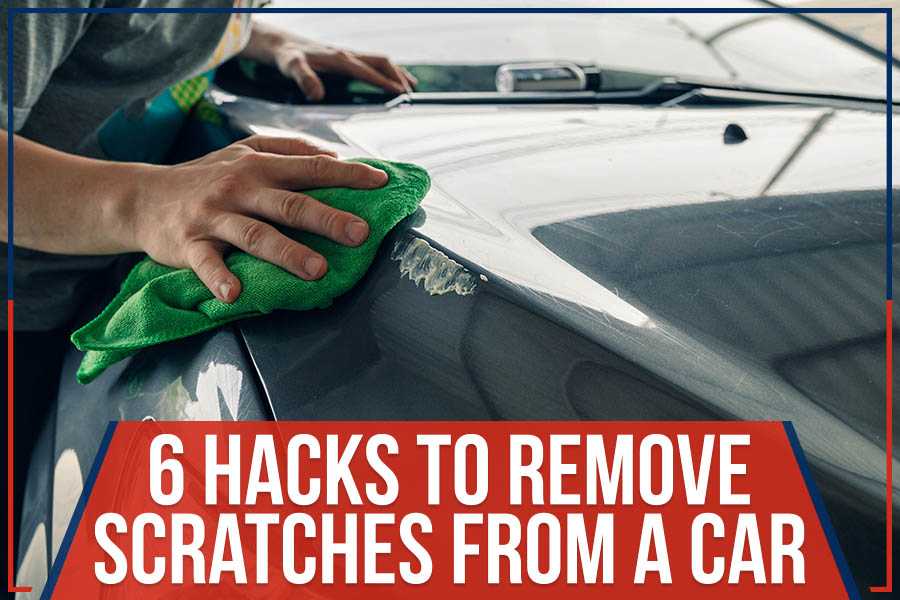To remove scratches from your car quickly, start by cleaning the area to remove dirt and debris, then assess the depth of the scratch. For minor scratches, applying a polishing compound or rubbing gently with a scratch removal kit can do the trick. For deeper scratches, touching up with matching paint and finishing with a clear coat may be necessary. Always test on a small area first and follow the product instructions carefully.
If your car has scratches, don’t worry—most minor blemishes can be repaired at home with simple steps. First, clean the affected area thoroughly to ensure no dirt causes further damage. Then, determine how deep the scratch is; shallow scratches can often be buffed out with polishing compounds or scratch removers, while deeper ones might require touch-up paint. Protect your vehicle’s finish by finishing with a wax or sealant. With patience and the right tools, your car can look as good as new quickly and affordably.
Scratches can be frustrating, but fixing them doesn’t always mean costly trips to the mechanic. The key is identifying the scratch’s depth and choosing the right method to address it. Light surface scratches can often be polished away, while deeper gouges may need more intensive touch-up work. Regular maintenance and prompt repairs can keep your car looking pristine, preserving its value and appearance. Whether it’s a quick fix or a deeper repair, understanding the best approach will save you time and money, and help keep your car shining brightly.
How to Remove Scratches from a Car
Understanding Different Types of Car Scratches
Car scratches come in various forms, each requiring specific methods for removal. Superficial scratches usually affect only the clear coat and are easier to fix. Deep scratches go beyond the clear coat and may damage the primer or metal underneath, demanding more effort or professional help. Recognizing the type of scratch on your vehicle is the first important step before choosing a cleaning method.
Assessing the Severity of the Scratch
Start by examining the scratch closely under good lighting. Light scratches appear as thin lines that don’t penetrate deep into the paint. If you can feel the scratch with your fingernail, it might be a deeper mark. Superficial scratches often can be polished out, while deeper ones may need filler or repainting. Always determine the depth before proceeding to repair to avoid worsening the damage.
Gathering Supplies for Scratch Removal
Before starting, gather all necessary tools and products to save time. You will typically need:
- Microfiber cloths
- Car scratch remover or polish
- Touch-up paint (matching your car color)
- Sandpaper (for deep scratches)
- Wax or sealant
Quality products make a big difference in the results. Using the right tools will help achieve a smooth, professional-looking finish.
Cleaning Your Vehicle Thoroughly
Always wash the area around the scratch before attempting repair. Dirt and debris can cause additional scratches during the process. Use a mild car wash soap and a microfiber cloth to gently clean the surface and dry it with another clean cloth. This ensures you work on a clean surface and prevents dirt from causing further damage.
Removing Light Scratches with Polishing Products
For minor scratches that only affect the clear coat, polishing is often enough. Apply a small amount of car polish or scratch remover to a microfiber cloth. Gently rub it into the scratch in circular motions. Let the product sit for a few minutes, then buff it off with a clean cloth. Repeat if necessary until the scratch becomes less visible.
Using Touch-Up Paint for Deeper Scratches
For scratches that have penetrated deeper into the paint, touch-up paint offers a good solution. Match the paint color precisely using your car’s paint code. Clean the area thoroughly, then carefully apply the paint with a fine brush or toothpick. Allow it to dry completely, then gently sand the area with very fine-grit sandpaper. Finish with a clear coat to protect the repair and restore the shine.
Sanding and Refinishing Deep Scratches
Deep scratches often require sanding to smooth out rough edges before painting. Use fine-grit sandpaper (1500 to 3000 grit) to gently sand the affected area. Be cautious to avoid removing too much paint. After sanding, apply multiple thin coats of touch-up paint, allowing each layer to dry thoroughly. Finish with a clear coat and buff to blend the repair with the surrounding surface.
Polishing and Sealing the Repaired Area
Once the scratch has been removed and the paint has dried, polishing helps restore the car’s gloss. Use a high-quality car polish and a soft cloth to buff the area. This step smooths out uneven surfaces and matches the shine of the rest of the vehicle. Applying a wax or sealant afterward provides extra protection against future scratches and environmental damage.
Preventing Future Scratches
Prevention is key to keeping your vehicle looking its best. Park in designated areas away from potential hazards such as shopping carts or tree branches. Regularly washing and waxing your car adds a protective layer to the paint. Being cautious during washing and avoiding abrasive cleaners also helps prevent new scratches.
Additional Tips for Maintaining Your Car’s Paint
To keep scratches from worsening:
- Use soft microfiber cloths instead of rough towels
- Avoid washing the car in direct sunlight
- Apply wax every few months for a protective barrier
- Park in shaded areas whenever possible to minimize UV damage
These simple habits help prolong the life of your car’s finish and keep it looking pristine.
When to Seek Professional Help
If the scratch is deep, extensive, or you feel unsure about fixing it yourself, consult a professional auto body shop. Deep scratches that expose metal can lead to rust if not properly repaired. Professionals have the tools and expertise to restore your car’s appearance thoroughly and safely.
Related Topics
Explore additional car care tips including:
How to Protect Your Car’s Paint
Learn the best techniques for waxing and applying paint protection films.
Best Car Wash Methods
Discover gentle washing routines that prevent scratches.
DIY Car Detailing Tips
Get advice on restoring the shine and cleanliness of your vehicle at home.
Maintaining your car’s exterior takes effort, but with the right knowledge and tools, you can effectively remove scratches and keep your vehicle looking new longer. Whether dealing with minor abrasions or deep gouges, understanding the proper techniques ensures your car remains in top condition.
How to Remove Scratches from Car PERMANENTLY (EASY)
Frequently Asked Questions
What techniques can I use to minimize the appearance of scratches on my car’s surface?
To reduce the visibility of scratches, start by washing your car thoroughly to remove dirt and debris. Use a clay bar to smooth out the surface and prepare it for polishing. Apply a high-quality polish or rubbing compound to the affected area, using a soft applicator and gentle pressure. Buff the area with a microfiber cloth until the scratch blends with the surrounding paint, giving it a more uniform look.
Is it safe to use DIY scratch repair kits on my vehicle?
DIY scratch repair kits can be effective for minor scratches, but their success depends on the depth and severity of the damage. Always follow the instructions provided with the kit, and test the product on a small, inconspicuous area first. If the scratch penetrates the clear coat into the paint layer, consider consulting a professional to avoid causing further damage.
When should I seek professional help to fix scratches on my car?
If scratches are deep, exposing the metal underneath, or if multiple scratches cover a large area, it’s best to take your vehicle to a professional. Professionals have the tools and expertise to properly sand, fill, and paint the affected area, ensuring a seamless repair. Additionally, seek help if DIY methods do not provide satisfactory results or if you’re unsure about the extent of the damage.
How can I prevent scratches from occurring on my car in the future?
Prevent scratches by parking your car in shaded or covered areas whenever possible to avoid contact with abrasive objects. Regularly wash and wax your car to add a protective layer that resists minor scratches. Avoid using rough cloths or brushes, and be cautious when loading or unloading items to prevent accidental scrapes. Installing protective film or paint protection coating also offers added defense against scratches.
Final Thoughts
To remove scratches from a car effectively, start by cleaning the area. Use a gentle automotive cleaner to eliminate dirt and debris. Apply a scratch remover or rubbing compound with a microfiber cloth, gently polishing the affected zone.
For deeper scratches, consider using touch-up paint that matches your car’s color. Apply it carefully and let it dry completely before polishing. Always follow the product instructions for the best results.
In conclusion, knowing how to remove scratches from a car helps maintain its appearance and value. Proper cleaning, polishing, and touch-up work will improve the look of your vehicle and protect its finish.
- How To Fix Laminated Windshield Chip Effectively - October 29, 2025
- How To Repair Laminated Glass Crack Effectively - October 29, 2025
- How To Clean Laminated Glass Properly For Sparkling Results - October 29, 2025



